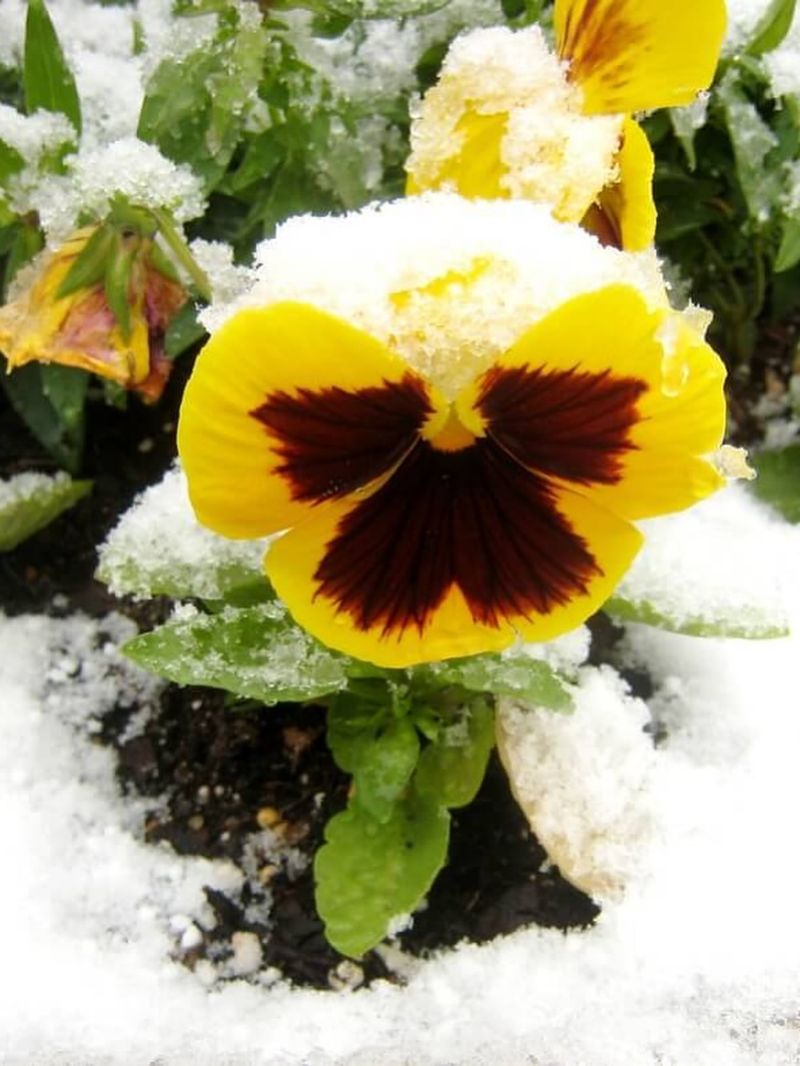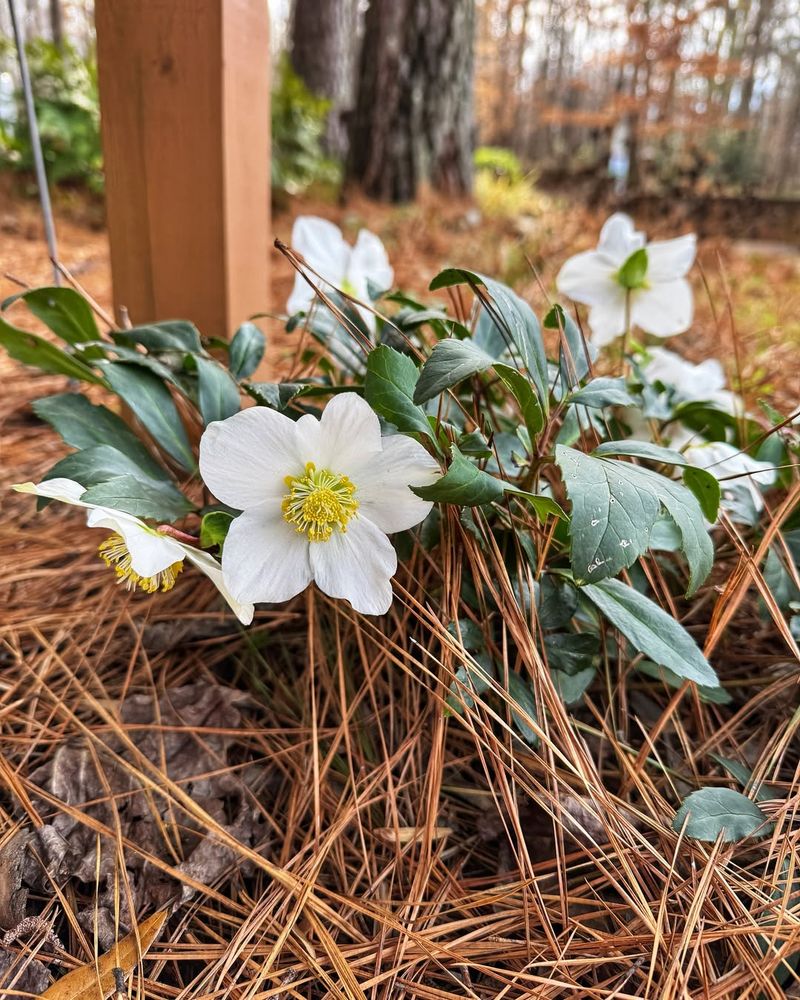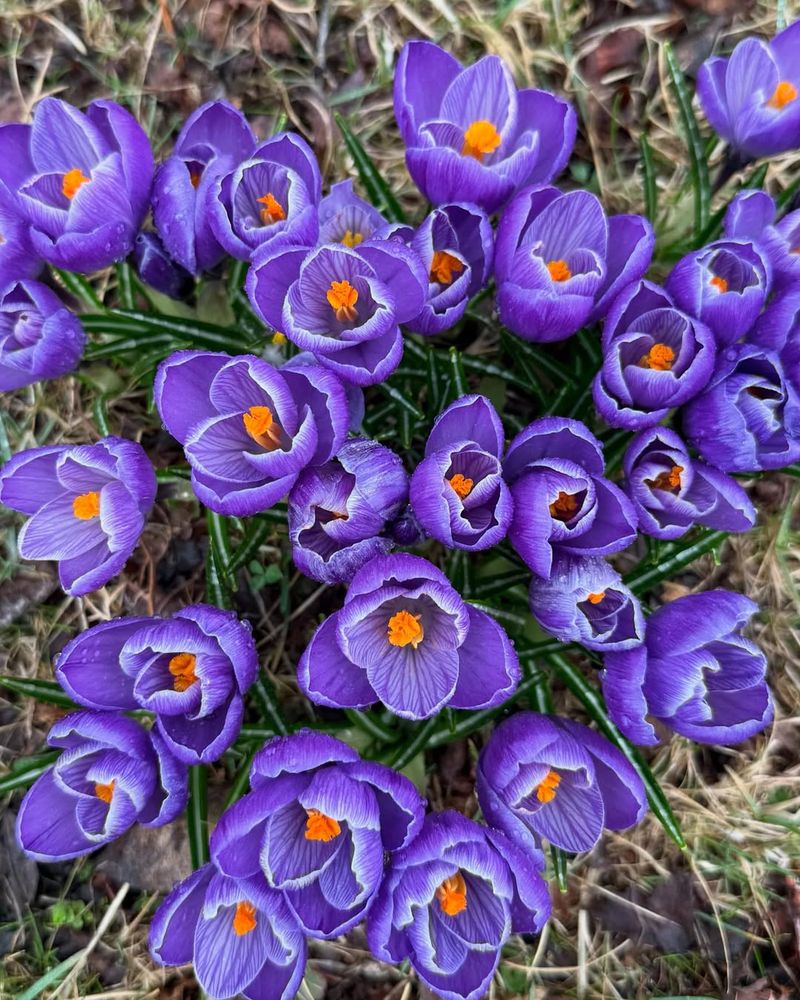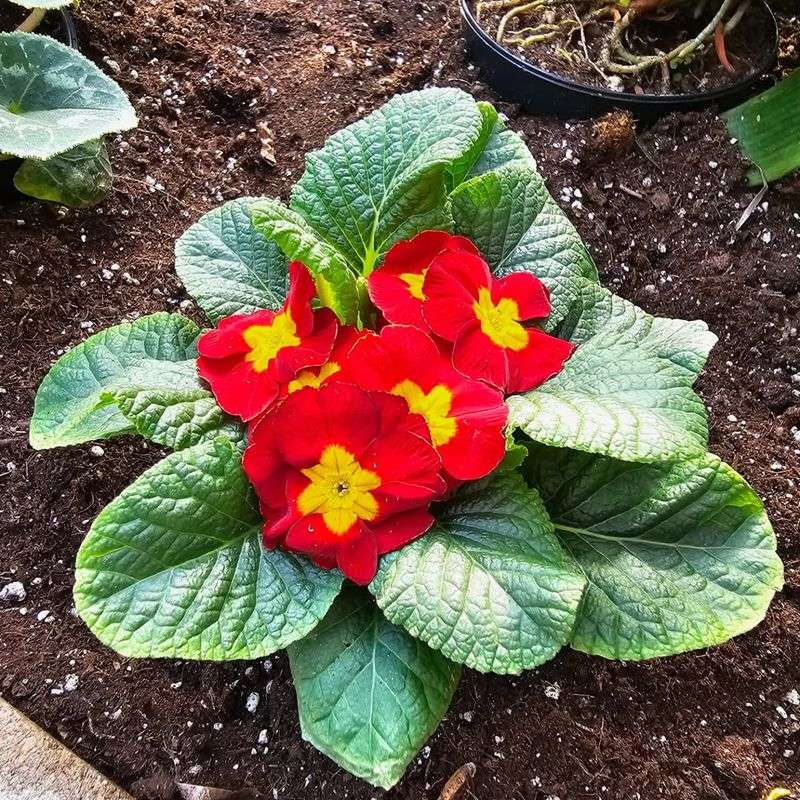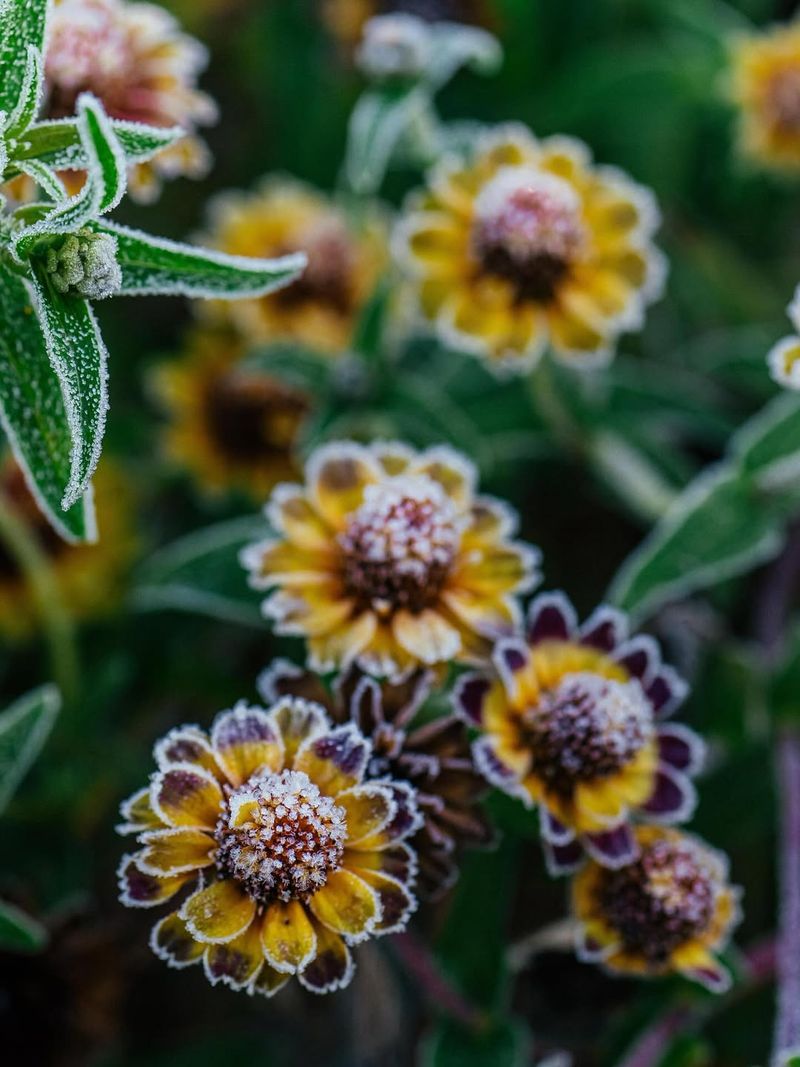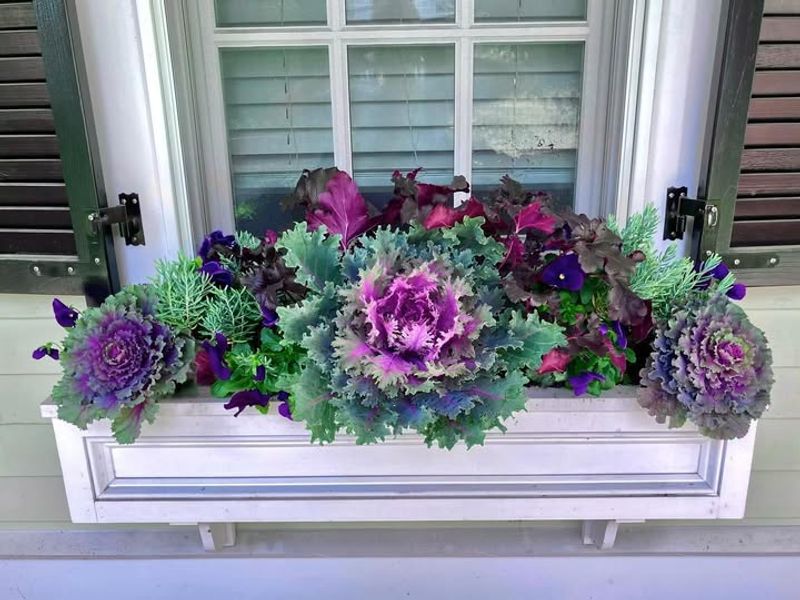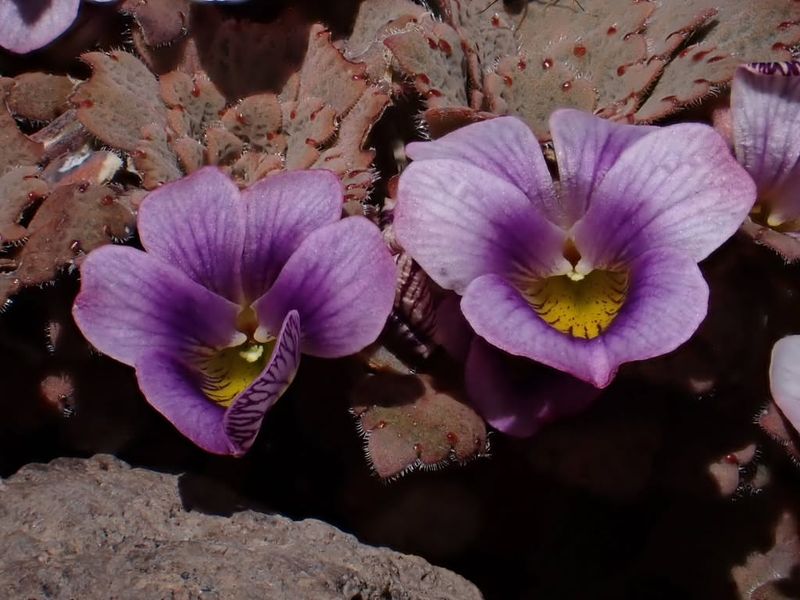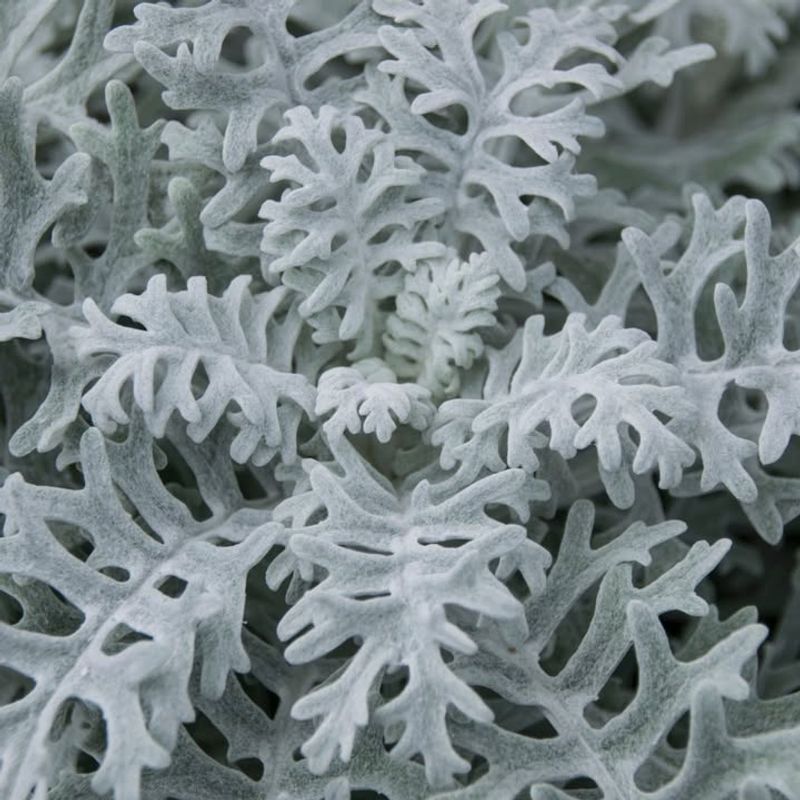Colorado winters can be brutal, with freezing temperatures, heavy snowfall, and unpredictable weather patterns that challenge even the toughest plants.
But some flowers refuse to give up, blooming beautifully despite the harsh conditions. Gardeners across the state have discovered certain blooms that not only survive but actually thrive when the cold hits hard, bringing color and life to winter landscapes.
1. Pansies
Bright faces peek through snow, making pansies one of Colorado’s favorite winter bloomers. Their cheerful flowers come in purple, yellow, orange, and white, creating stunning color combinations even when temperatures drop below freezing.
Plant them in fall for best results, and watch them bloom throughout winter whenever temperatures rise above 40 degrees. They handle frost like champions, bouncing back after snowstorms with remarkable resilience.
Water them regularly during dry spells, and they’ll reward you with continuous blooms until spring arrives.
2. Hellebores
Often called Christmas roses, hellebores start blooming in late winter when most plants are still sleeping. Their nodding flowers appear in shades of white, pink, burgundy, and green, creating an elegant display against evergreen foliage.
Deer and rabbits leave them alone, making them perfect for mountain gardens. Plant them in partial shade where they’ll naturalize over years, forming beautiful clumps.
Once established, they need minimal care and will bloom reliably every winter for decades, becoming treasured garden heirlooms.
3. Crocus
Among the earliest bloomers, crocuses burst through snow cover with vibrant purple, yellow, and white flowers that signal winter’s end. These tiny bulbs pack a powerful punch, creating carpets of color when planted in groups.
Squirrels sometimes dig them up, so plant extras to compensate. They multiply naturally over time, spreading cheerful blooms across lawns and garden beds.
Plant bulbs in fall about three inches deep, and they’ll return year after year with zero maintenance required.
4. Primrose
Primroses bring rainbow colors to late winter gardens with flowers in practically every shade imaginable. Their rosettes of blooms sit atop bright green foliage, creating dense mounds of color that last for weeks.
They prefer cooler temperatures and actually struggle in summer heat, making them ideal for Colorado’s spring climate. Keep soil consistently moist but not waterlogged for best performance.
Mass plantings create stunning displays in containers or garden beds, providing early nectar for hungry bees emerging from winter dormancy.
5. Snapdragons
Tall spikes of snapdragons keep blooming through light frosts, offering vertical interest when most plants lie dormant. Kids love squeezing the flowers to make them snap open like dragon mouths, adding playful charm to gardens.
Choose shorter varieties for windy Colorado locations, as tall types sometimes topple over. They come in nearly every color except true blue, allowing endless design possibilities.
Deadhead spent blooms regularly to encourage more flowers, and they’ll keep performing until hard freezes arrive in late fall.
6. Ornamental Kale
Technically not a flower, ornamental kale earns its place with stunning rosettes of purple, pink, and white foliage that intensify as temperatures drop. Frost actually improves their color, transforming them into living bouquets.
They look spectacular in containers flanking doorways or mixed into garden beds for texture contrast. Unlike regular kale, these varieties focus on beauty rather than flavor.
Plant them in late summer or early fall, and they’ll provide color throughout winter until spring warmth causes them to bolt.
7. Dianthus
Spicy-scented dianthus flowers feature fringed petals in pink, red, and white that smell like cloves. Their blue-green foliage stays attractive year-round, even when flowers take winter breaks.
Also called pinks, these tough plants handle Colorado’s alkaline soil better than many flowers. They need excellent drainage to prevent root rot during wet periods.
Plant them in full sun where they’ll bloom heaviest in spring and fall, with sporadic flowers appearing throughout winter during warm spells.
8. Violas
Smaller cousins of pansies, violas produce abundant tiny flowers that cover plants completely. Their delicate appearance belies incredible toughness, as they bloom continuously through freezing temperatures and snowstorms.
Use them as groundcovers under taller plants or let them spill over container edges for cascading color. They self-seed readily, popping up in unexpected places with welcome surprises.
Violas need less deadheading than pansies, making them lower-maintenance choices for busy gardeners who want maximum color with minimal effort.
9. Dusty Miller
Silvery foliage makes dusty miller shine in winter gardens, especially when covered with frost crystals that sparkle in morning sunlight. Its fuzzy leaves reflect light beautifully, brightening shady spots where other plants disappear.
While it produces small yellow flowers, gardeners grow it primarily for stunning silver-gray foliage that contrasts perfectly with colorful blooms. It tolerates drought, poor soil, and neglect remarkably well.
Plant it as edging along pathways or use it to separate bold flower colors in mixed beds for sophisticated design impact.
10. Winter Jasmine
Cheerful yellow flowers appear on bare green stems before leaves emerge, creating striking winter displays. This sprawling shrub blooms sporadically throughout winter whenever temperatures warm up, bringing sunshine to dreary days.
Train it along fences or let it cascade over walls for dramatic effect. Unlike other jasmines, this variety lacks fragrance but compensates with reliable winter color.
It spreads enthusiastically through layering, so give it plenty of room or be prepared to prune regularly to control its exuberant growth habit.
11. Siberian Squill
Electric blue flowers carpet the ground in early spring, creating stunning drifts of color that rival any garden show. These small bulbs naturalize rapidly, spreading to form ever-larger colonies that announce spring’s arrival.
Plant them under deciduous trees where they’ll bloom before leaves emerge and shade them out. They need virtually no care once established and tolerate neglect beautifully.
Chipmunks and squirrels ignore the bulbs, unlike tulips and crocuses, making them reliable performers that return faithfully every year without replacement.


